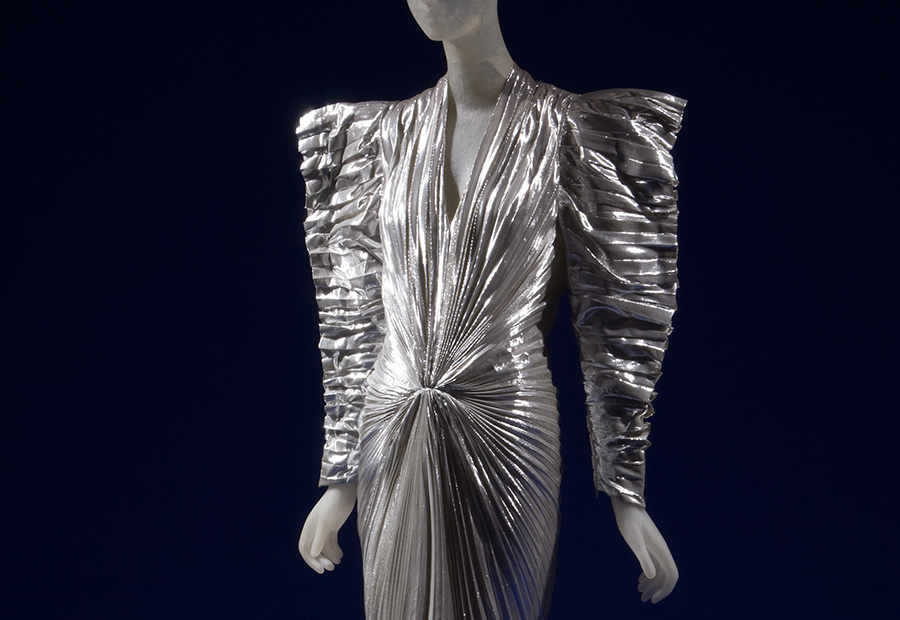Statement Sleeves
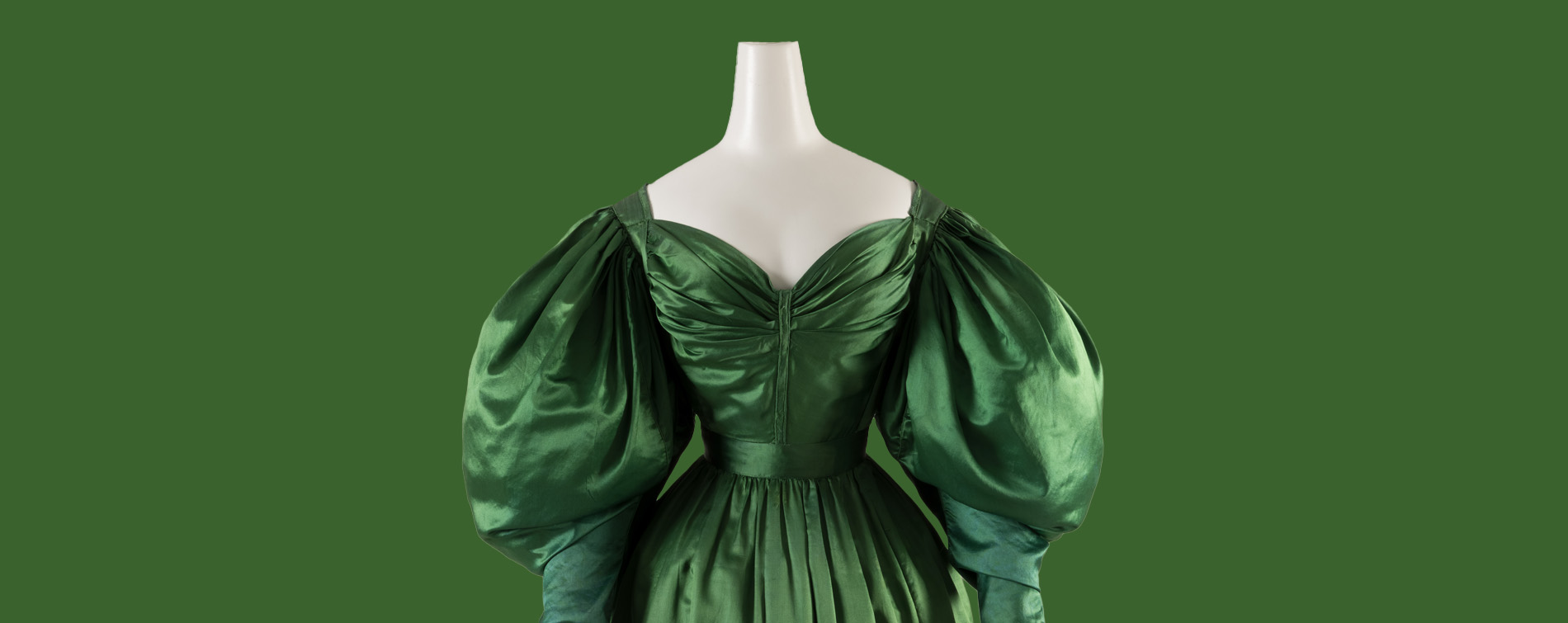 Afternoon dress, circa 1830, England, museum purchase, P88.28.1
Afternoon dress, circa 1830, England, museum purchase, P88.28.1Share using #StatementSleevesMFIT
What is a “statement sleeve”? The fashion media has regularly used the term for less than a decade, yet many of us can conjure images of what it describes: a sleeve style that is exaggerated, embellished, elaborately constructed, or otherwise eye catching to the extent that it defines a garment. Statement sleeves have been spotted on innumerable fashion runways in recent years, with no sign of waning. From puffed to ruffled, split to sheer, there is a style for everyone.
Statement Sleeves, curated by Colleen Hill, curator, Costume and Accessories, showcases nearly 80 fashion pieces from The Museum at FIT's permanent collection - the majority of which are on display for the first time - and features the works of renowned designers such as Balenciaga, Tom Ford, Schiaparelli, and Vivienne Westwood. They are organized thematically or by complementary aesthetics rather than chronology. The exhibition highlights how sleeves serve as a vital mode of self-expression that reflects our gestures and movements, showcases their ability to indicate specific fashion eras and their related trends, and proclaims their role as signifiers of status, taste, and personality.
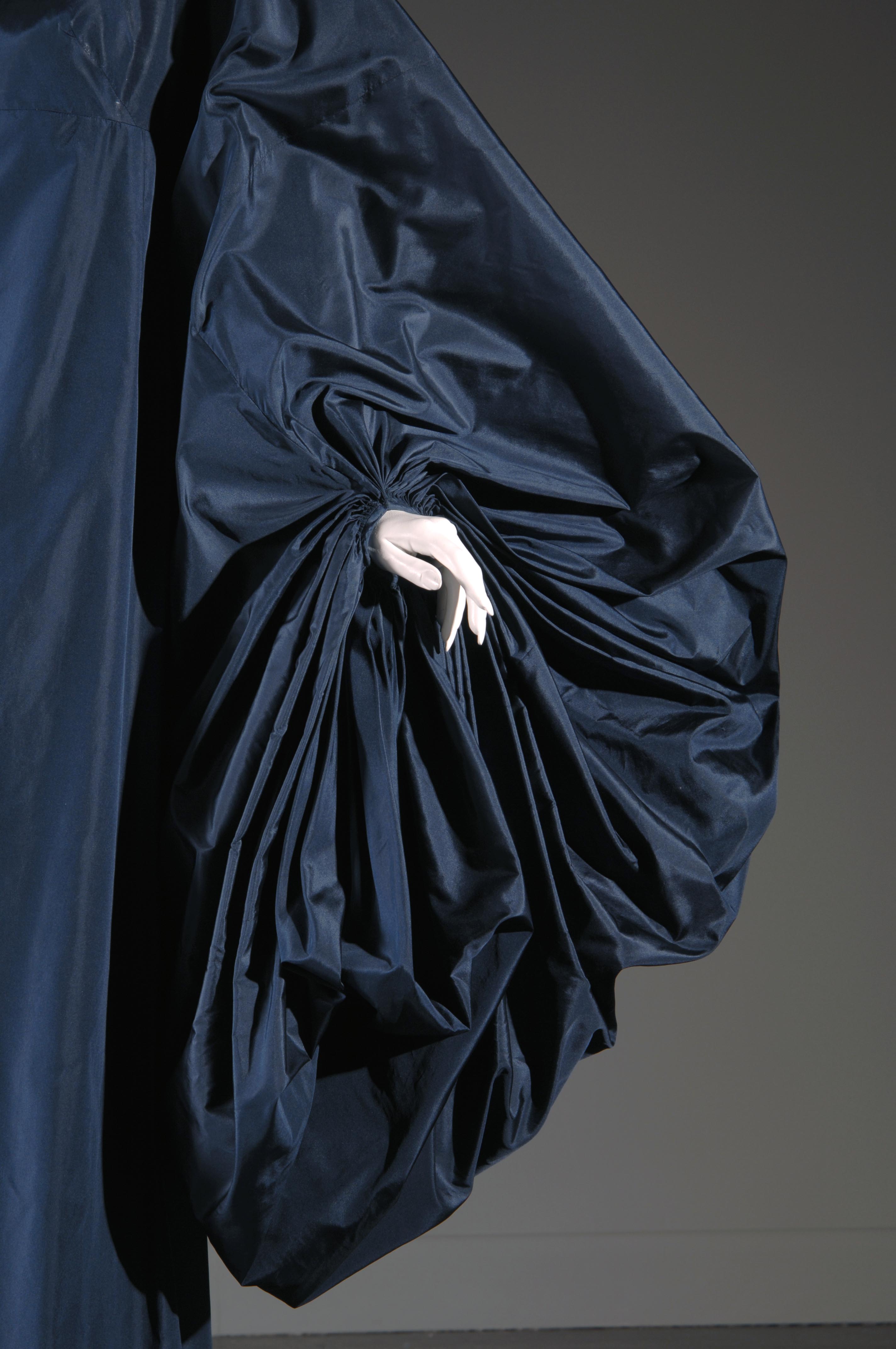
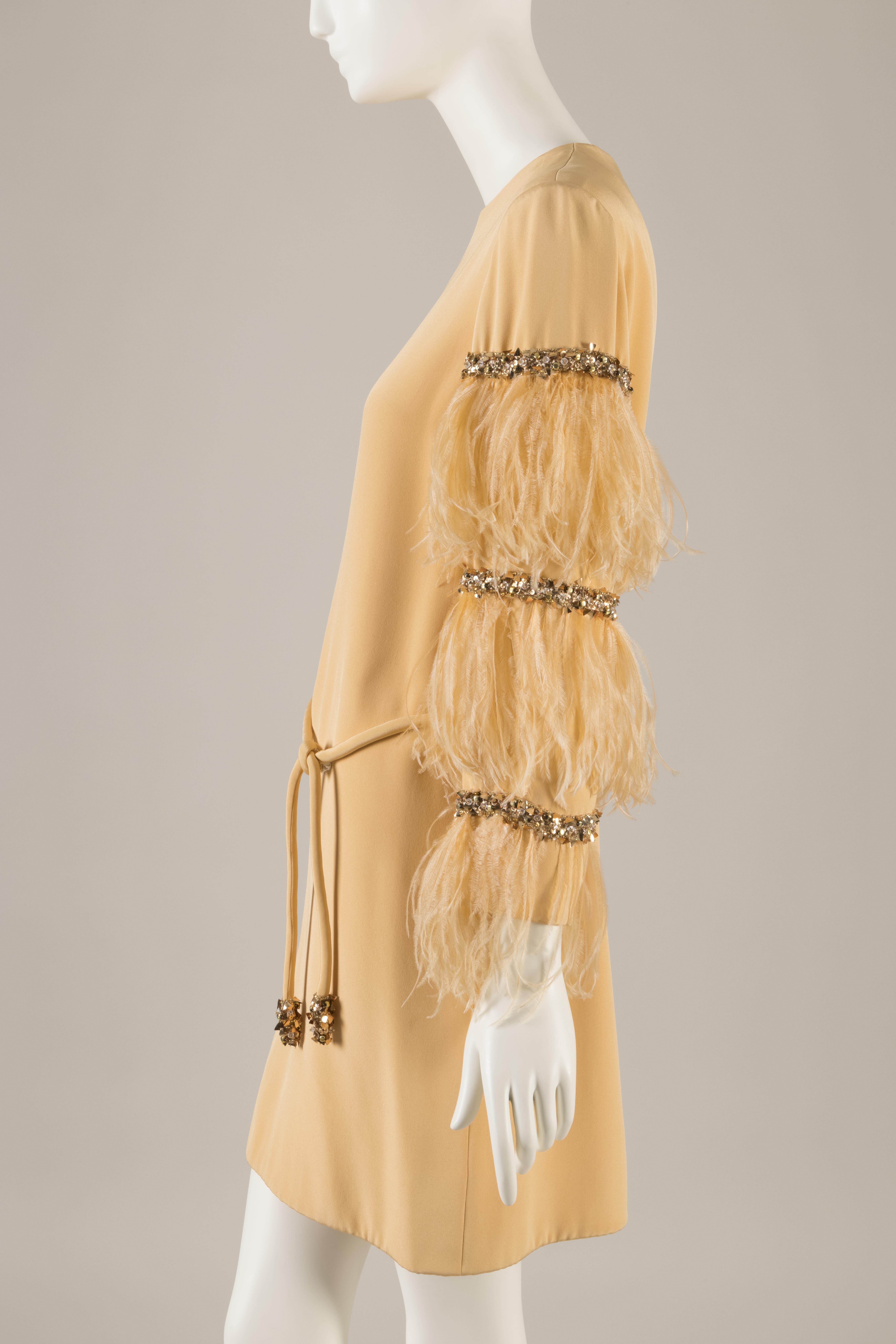
The introductory section, Fundamental Forms, provides an overview of common sleeve shapes such as the bell, the bishop, and the raglan. Each is made from black fabric, allowing visitors to focus on the shape of the sleeve. A blouse in silk faille exemplifies the leg-of-mutton style fashionable in the 1890s—an enormous, puffed sleeve that tapers from the elbow to the wrist—whereas a man’s robe from the 1920s, made from stripes of silk and velvet, features kimono-inspired sleeves. These examples provide a foundation for the more fantastical sleeves on view in the remainder of the gallery, many of which build upon or hybridize these basic shapes.
Opening Statements exemplifies how some decades have demonstrated a particular affinity for elaborate sleeves. The enormous, puffed sleeves that defined dresses of the 1890s were inspired by styles from the 1830s. In the 1930s, designers exhibited a fondness for sleeves of many types—the more intricate, the better. The opulence and excess of 1980s fashion was often expressed through outsized sleeves in luxurious fabrics, whereas current statement sleeves are both playful and fashion forward. A circa 1980 dress by Madame Grès with oversized, draped sleeves is shown alongside a spring 2022 dress by LaQuan Smith, which cleverly combines draping and a puffed sleeve to create a thoroughly contemporary silhouette.
The exhibition continues with Puffs and Folds. This section includes a 1920s brown silk evening set by Milgrim featuring straight sleeves inset with puffs of red patterned fabric over the elbow. This design segues into a series of garments in which fabric is folded and draped to create innovative new shapes, exemplified by a taupe silk dress by Isabel Toledo in which a cape back elegantly unfurls into curved petal sleeves.
Pleats and Ruffles offer additional ways to create spectacular sleeves. A 1920s blue velvet coat—likely a Parisian style sold in New York by Mae and Hattie Green—features sleeves gathered into wide tucks that dramatically extend from under a broad collar. Rudi Gernreich’s black minidress from the late 1960s includes full-length sleeves made from tiers of ruffles in contrasting off-white wool. Although thoroughly modern in appearance, its sleeves take their cue from mid-19th-century designs. Gernreich’s creation is shown alongside a white cotton blouse with ruffled, bell-shaped sleeves by Hubert de Givenchy from 1952. It is a version of the couturier’s famous “Bettina” blouse, named after one of his preferred models, Bettina Graziani.
Embellishment and Adornment includes eye-catching styles such as a fall 1968 couture dress by Marc Bohan for Dior, featuring sleeves that are densely embroidered with feathers, sequins, and beads—a design that would have been especially receptive to light and its wearer’s gestures. Two immaculately tailored suits—one by Adrian from the early 1950s, and one from Yves Saint Laurent’s spring 1992 ready-to-wear collection—exemplify how conventional designs can be rendered spectacular when adorned with a voluminous sleeve.
The functionality and adaptability of sleeves is explored in a section on Performance and Purpose. A late 19th-century coat made from black brocade and trimmed with marabou feathers, known as a dolman, was designed to be fitted over the torso and extend over the fashionable bustle skirt. Its construction would have greatly restricted the movement of the arms. In contrast, contemporary designer Lucy Jones focuses on ease of wear, creating specially shaped and detachable sleeves intended for wheelchair users and people of diverse abilities. This section also includes the oldest garment in the exhibition, a set of stays (corset), circa 1770. Made from blue silk, it features detachable sleeves that are secured to the body of the garment by ribbons. This rare design was likely worn as at-home attire.
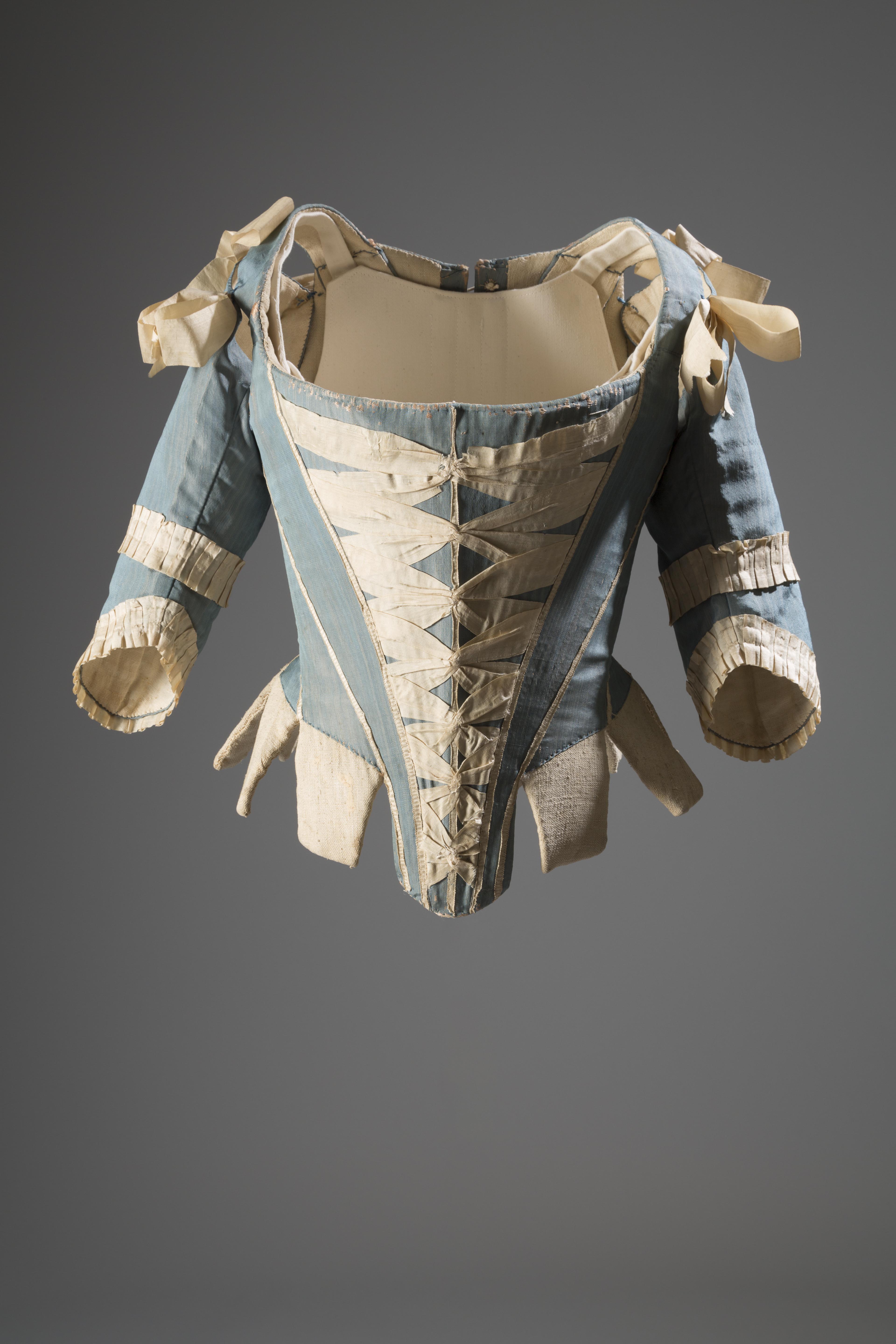
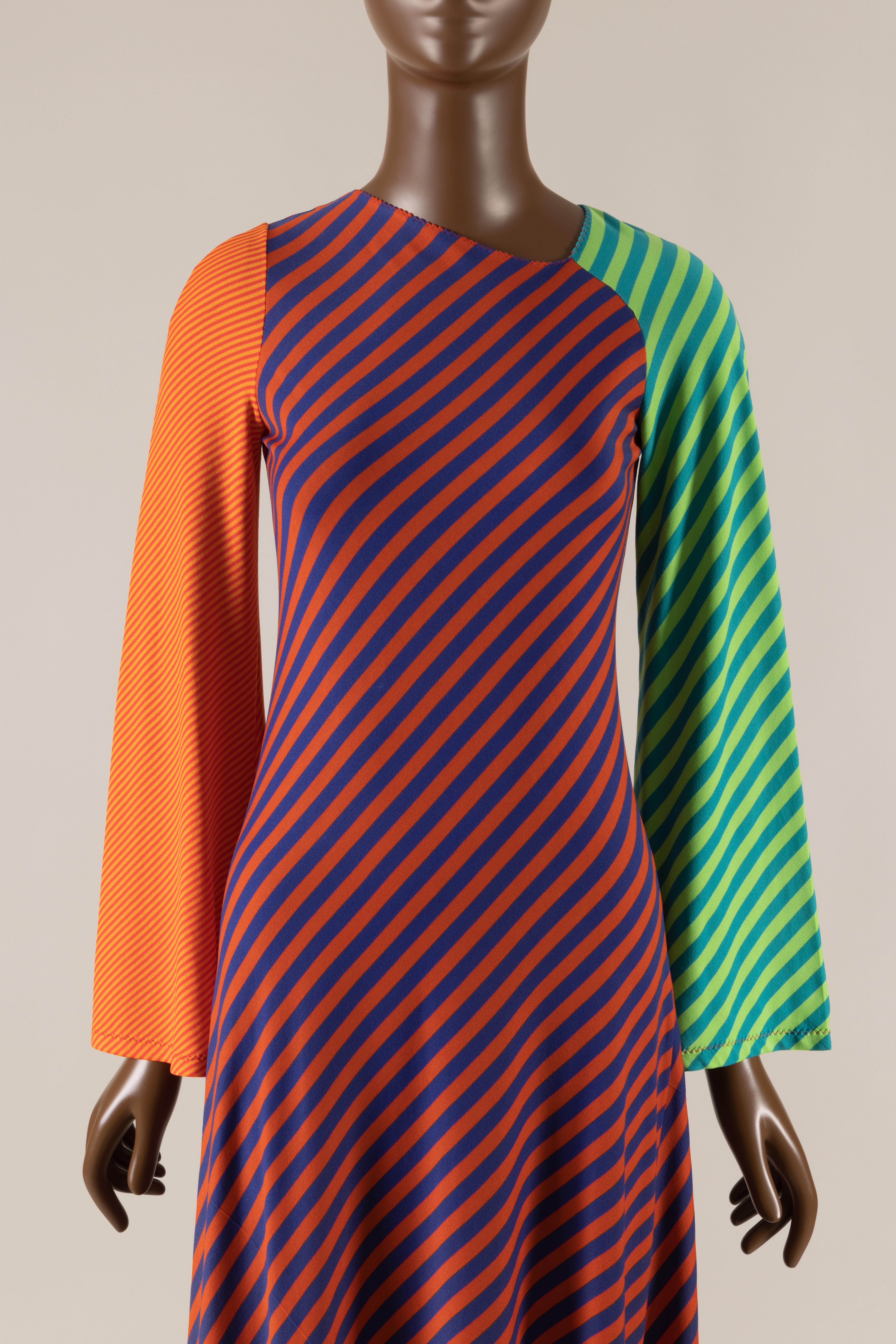
A section devoted to Sheer and Split sleeves begins with a circa 1830 gown made from cream silk satin. Its short, puffed sleeves are enveloped by full over-sleeves in sheer chiffon. Although transparent and coquettish, the over-sleeves would have added a layer of modesty to the ensemble, and it is possible they would have been removed for more formal evening events. A spring 2011 ensemble in orange and fuchsia silk, designed by Marc Jacobs for Louis Vuitton, features full sleeves that are split down the length of the arm and gathered into a cuff at the wrist, allowing them to billow out as the wearer moved.
The final section of the exhibition, Asymmetrical and Mismatched, includes a selection of particularly playful designs. Stephen Burrows’ colorful creations frequently included contrasting sleeves, such as a dress made from striped jersey fabric in three colorways: one for the body, and another for each of the sleeves. For his fall 1990 collection, Christian Francis Roth designed tongue-in-cheek ensembles inspired by boxes of crayons. A woman’s suit features one sleeve made from green wool embellished with the word “Rothola,” which was intended to resemble a crayon’s paper wrapping.
Statement Sleeves celebrates the seemingly endless creative variations on this fundamental element of fashion. Striking sleeves continue to appeal for their democratic quality—they are not confined to a particular gender, economic status, or body type. As the fashion editor Jess Cartner-Morley explained, “There is an uncomplicated joy in a trend that pulls focus away from the body on to the actual clothes.” Past and present, the styles on view explore the innovation, allure, and fun of fashion.
Press Release and Additional Content
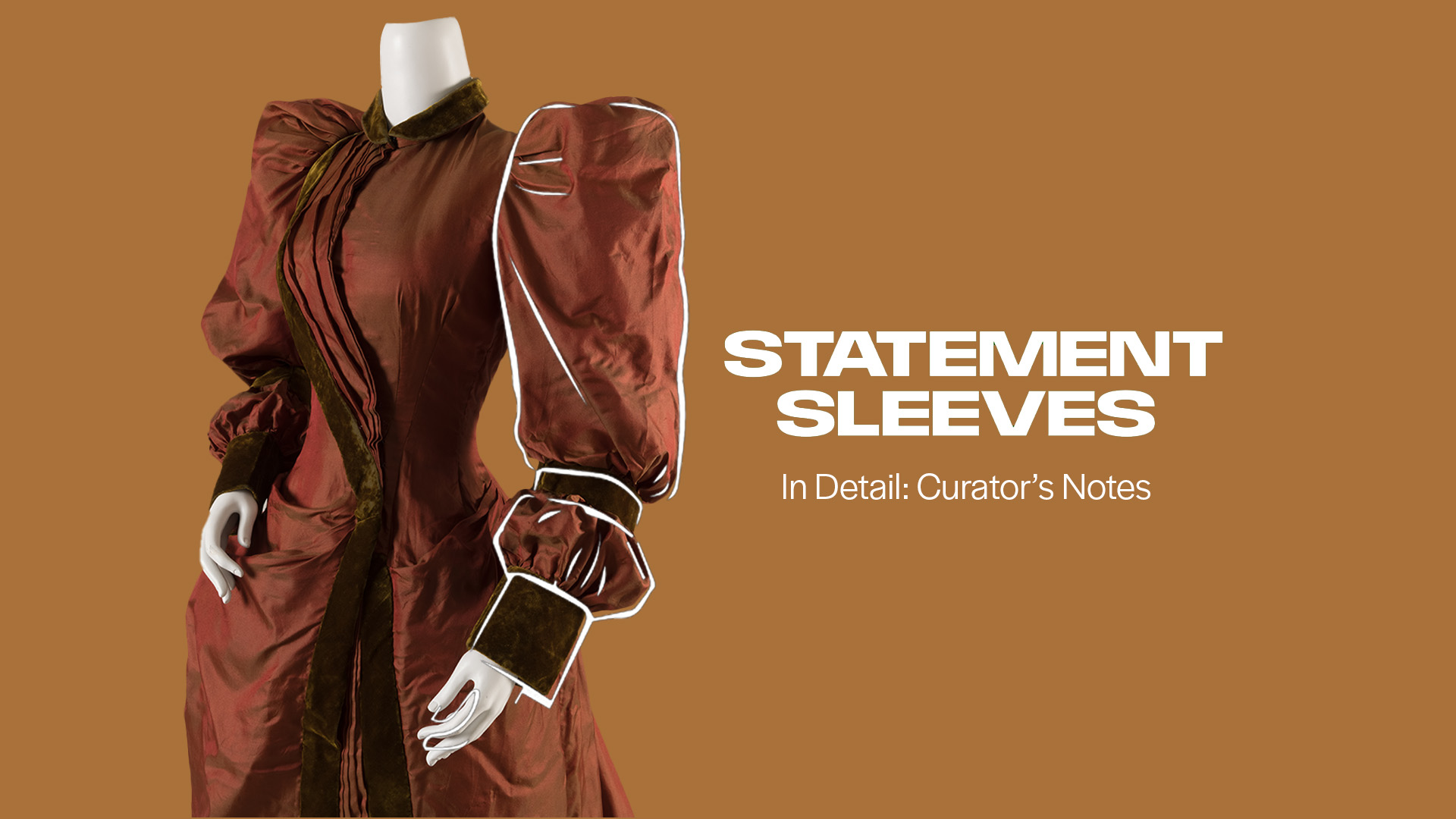
Statement Sleeves in Detail: Curator's Notes on Bloomberg Connects
In the Press
Parts of Fashion: Curating in Focus
Dive Deeper into the Exhibition
Image: Thierry Mugler, silver metallic lamé dress, fall 1979, France, gift of Clarins Fragrance Group/Thierry Mugler Perfume, 2004.49.4
